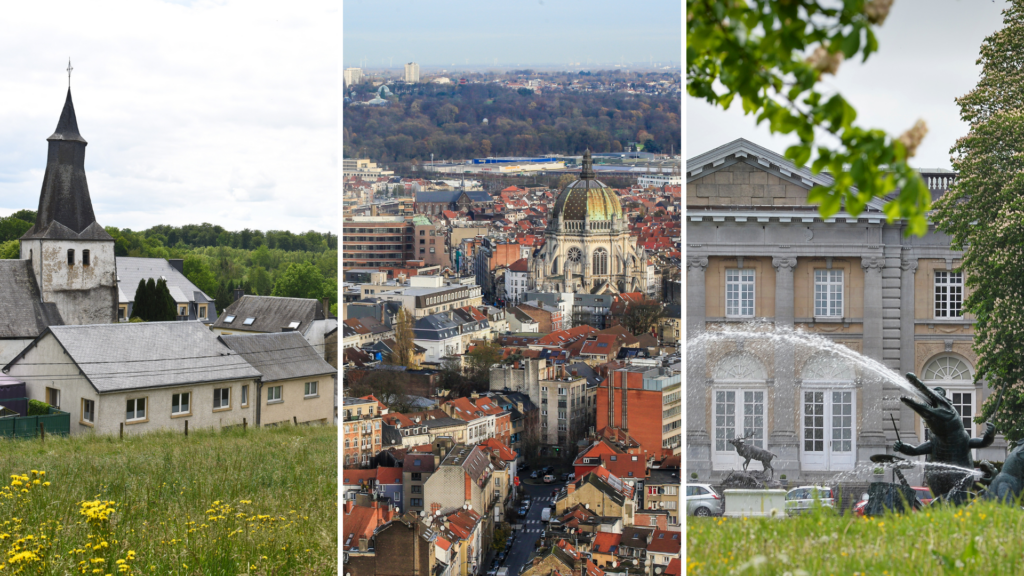Discover the stark contrasts in wealth across Belgium's communes;
✔ Six of Belgium’s richest communes are in the province of Luxembourg
✔ Six of the ten poorest communes are in Brussels
✔ Saint-Josse-ten-Noode records the lowest median income in Belgium with €19,288
Where are Belgium's richest and poorest municipalities?

New figures show the distribution of wealth in Belgium based on income data. The median income in Belgium's poorest commune is more than half that of people in the richest.
Wealth distribution in Belgium has improved slightly in recent years, but still, there are stark differences in the median income when examining individual communes.
Belgian statistical office Statbel analysed the administrative equivalent disposable incomes of all people living in Belgium – an indicator of disposable income that includes taxable income such as wages and non-taxable income like benefits, pensions, property income and social benefits – and found major geographical differences.
"The median income per municipality is by far the highest in Attert [Luxembourg province] with a median net income of €42,211," Statbel noted. Saint-Josse-ten-Noode in Brussels had the lowest median income, at €19,288. Both municipalities occupied the same positions in 2020 and 2021.
Poorest in Brussels
The province of Luxembourg is home to six of the top ten richest communes in Belgium: Attert (€42,211), Messancy (€37,226), Etalle (€34,978), Saint-Léger (€34,924), Arlon (€34,822) and Habay (€34,120).
"It is reasonable to assume that these people live in the province of Luxembourg in Belgium but work in Luxembourg (country/city)," Statbel spokesperson Wendy Schelfhaut explained. The country's salaries are among the highest in Europe.
Three of the richest municipalities are located in the province of Flemish Brabant, all near the border with Brussels. These are Kraainem (€36,531), Tervuren (€34,814) and Wezembeek-Oppem (€34,702). The Brussels commune of Woluwe-Saint-Pierre (with a median income of €34,690), completes the top ten.
The six richest municipalities in the Brussels-Capital Region are Woluwe-Saint-Pierre (€34,690), Auderghem (€31,185), Woluwe-Saint-Lambert (€30,384), Uccle (€28,800), Watermael-Boitsfort (€28,060) and Etterbeek (€27,332).
In contrast, six of the ten municipalities with the lowest incomes are in Brussels. These are Saint-Josse-ten-Noode (€19,288), Molenbeek-Saint-Jean (€19,739), Anderlecht (€20,512), Koekelberg (€21,141), Schaerbeek (€21,726) and City of Brussels (€21,862). Four of the poorest communes are located in Wallonia.
Find out how rich or poor your municipality is below.
This specific method of calculation uses administrative equivalent disposable income to arrive at the closest possible approximation to the population's 'disposable income'. This is weighted according to the number of people in the household and their age.
Another method of assessing people's income relies on net taxable income based on tax returns, including fewer sources of income. In this ranking, Flemish municipalities are placed at the top of the league due to their larger incomes.
Risk of poverty
Brussels' Saint-Josse-ten-Noode also tops the list in terms of the risk of poverty experienced by residents. Here, 34% of the population are at risk of poverty. A person is considered to be on the poverty line when they earn less than 60% of the median administrative equivalent disposable income at the national level (€16,458 per year in 2022).
Overall, poverty risks are highest in the Brussels-Capital Region. Following Saint-Josse-ten-Noode are Molenbeek-Saint-Jean (31.5%), Anderlecht (28.2%), Schaerbeek (26.8%) and Koekelberg (26.7%) – all in the top ten poorest communes.
The poverty risk levels are lowest in Flanders. Holsbeek and Zemst (both in Flemish Brabant) are the best-performing municipalities: here, only 3.4% of the population is below the poverty line.
Across Belgium, 88 municipalities have a poverty risk of less than 5%. "All provinces are represented except Walloon-Brabant and the Brussels-Capital Region," said Statbel.

